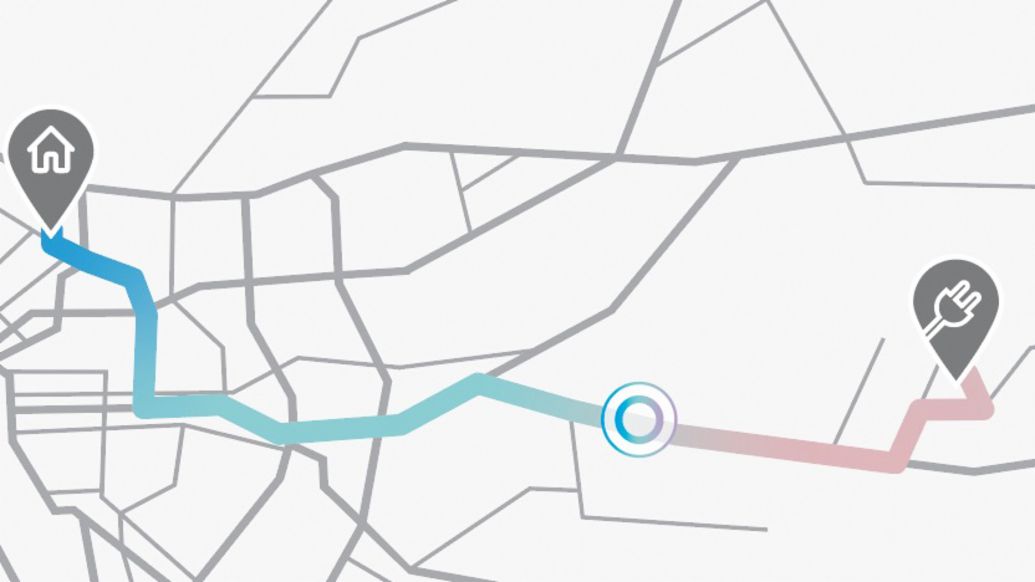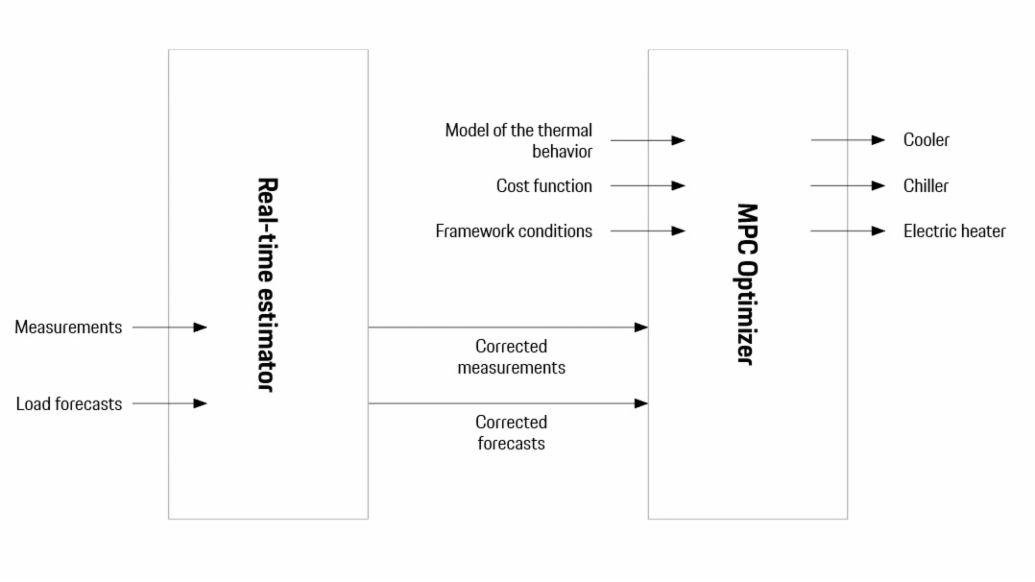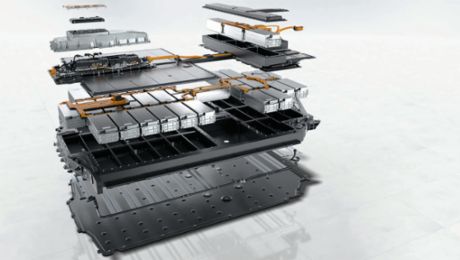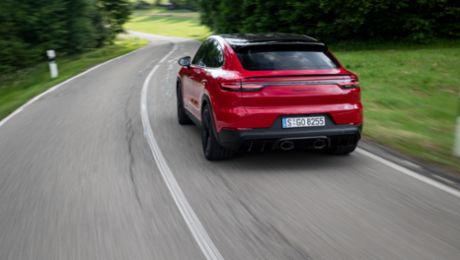Shorter battery charging times and longer ranges: this is the promise of the predictive thermal management system developed by Porsche Engineering last year as a concept study. The technology ensures that batteries are at the optimal temperature for stopping at the charging station and that fast charging takes only a few minutes. Temperature plays a key role in this: if the cells are too cold or too hot, charging performance drops. Thanks to predictive thermal management, however, this phenomenon could soon be a thing of the past: Software in the car will predict the upcoming course of the trip and control all thermal components so that the battery is at the optimum temperature. This look into the future also prevents unnecessary heating or cooling, which saves energy and increases the range.

This prediction distinguishes the new system from conventional thermal management as it is currently implemented in vehicles. In the simplest form currently on the market, it is a control loop that always keeps the engine temperature within a safe corridor. However, this usually works purely reactively: if the drive unit gets too hot, for example, the air flaps open to lower the temperature. In the case of combustion engines, this ad hoc control works quite well, as an engine block can be cooled down in a few minutes. However, the batteries in electric vehicles, which weigh up to 700 kilograms, have much greater thermal inertia. “With them, the temperature can only be regulated very slowly,” explains Björn Pehnert, Lead Engineer Thermal Management at Porsche Engineering.
“In order to get the battery to the right temperature for charging, the vehicle’s control system has to look further into the future than it does now.” Björn Pehnert, Lead Engineer Thermal Management
In order to bring the large battery in electric vehicles to the right temperature for charging in good time, the vehicle control system must detect potential loads in advance. “It is becoming essential to look further into the future,” Pehnert summarizes. It was precisely this challenge to which the engineers applied themselves. They developed a predictive thermal management system that predicts the battery temperatures for the upcoming trip. For example, if the forecasting program notices that the driver is driving towards a fast charging station, the system activates the cooling or heating systems on board with the necessary advance time, so that the battery has the perfect temperature for a fast charging process on arrival. Until recently, powerful mainframe computers were still needed for such complex calculations in real time. Thanks to clever optimization, however, the software runs on a normal control unit.
Simulation of the entire vehicle
In order for the vehicle control system to decide when to intervene for cooling or heating, it must first know how the various components interact. If the cells are cooled, for example, power consumption increases, which in turn decreases the range. A simulation of the entire vehicle therefore forms the basis of thermal management: everything—from the battery and drive unit to the cooling system and air conditioning system— is reproduced in the simulation using models. This digital twin behaves exactly like a real vehicle. For example, if the heating is turned on, the simulation shows exactly how this will affect the battery’s charge state.

However, the car reproduced by the computer only provides a target state. In reality, many other factors, which are often not directly measurable, influence the behavior of a vehicle: driving style, payload, road surface, even dirt on the bodywork, or the color of the paint (in black models, the interior heats up more). For this reason, a special software module (real-time estimator, RTE) ensures that these thermal influences are also taken into account. It compares the actual behavior of the vehicle with the simulation and thus gradually adapts the model to reality.
To be able to look into the future, the vehicle must, of course, know where the trip will take it. But hardly anyone enters every destination into the navigation device. Therefore, the driver can simply allow the car to “learn” the trips. It then tracks the routes via GPS and identifies frequently traveled routes by itself. Based on this experience, the system is later able to recognize the trip ahead shortly after starting and internally generate a map of the coming route. For example “five kilometers of urban traffic followed by 20 kilometers of highway at 120 km/h.” The core of the predictive thermal management is the optimizer. It takes the data from the simulated vehicle plus the route information and uses it to calculate the car’s optimal thermal response. When does the heat pump have to be activated to preheat the battery? When is it advisable to bring it down to a lower temperature with the help of the cooler or air conditioning?
What is referred to as the cost function determines which goal is being pursued. In the default configuration, the algorithm tries to minimize both charging time and energy consumption. Theoretically, however, priority could also be given to performance: in this case, the thermal management system would preheat the battery before reaching a highway access point so that the vehicle can accelerate more quickly. The special capability of the optimizer is that it recalculates its forecast every few seconds and adapts it to reality. For example, if the driver takes off their jacket and turns down the heating, the algorithm would notice this and take the effects into account in its next forecast.

This constant look into the future has several advantages: if an electric car is mainly used for short trips within the city, for example, the control unit learns this pattern and can raise the battery temperature beyond the normal corridor—but still within the safe range. This is because it knows that the journey will soon be over anyway and that the vehicle will then cool down by itself when parked. In this way, no energy would be wasted on superfluous cooling. Predictive thermal management can therefore not only shorten charging, but also improve the vehicle’s range. “10 to 30 percent energy savings are theoretically possible,” says Ondrej Holub, who leads software development at Porsche Engineering Prague.
Compute-intensive method for the control unit
Mathematically, the temperature control system is a model-based predictive system (model predictive control, MPC). It is used wherever multiple factors affect a system and future events must be taken into account. The oil industry uses MPC to control refineries, for example. However, the method also has a disadvantage: it’s very compute-intensive. “Traditionally, such optimizations run on extremely powerful computers,” explains Professor Michal Kvasnica from the Czech Technical University in Prague, who, together with his team, developed the core of the prediction code.
The greatest challenge for the mathematicians was to modify the highly complex optimization program in such a way that the control unit of a normal car could handle the calculations. This required some tricks, because there is usually less computing power available there than in a smartphone. For this reason, the program works with look-up tables, for example, which contain discrete values, such as the relationship between temperature and battery resistance. This saves computing time. “We also had to create a robust system that never fails,” adds Professor Kvasnica. “Making a completely new forecast every few seconds means several hundred thousand forecasts during average driving conditions per year—and each one has to be right.”
“We have brought together the best of the academic and automotive worlds.” Prof. Michal Kvasnica, Czech Technical University in Prague
The development of the forecasting software represented step one. The second step was to make the new technology tangible and implement it in a prototype. “We had to find a solution that would work with existing control units, without any further support from a supplier,” says David Kuhn, Complete Vehicle Thermal Management Development at Porsche Engineering. The code was first adapted to the complete vehicle architecture, then tested and calibrated in a Porsche Taycan demonstrator vehicle. The developers selected realistic trips, for example through the city, over country roads, or on the highway, including traffic jams. It would be pointless to try out such a system on a test track as there are few unforeseeable events that would have to be taken into account in a forecast. After six months the implementation was complete. Does the driver sense the software intervention? “No, and that’s exactly the goal,” says Kuhn. “It’s about meeting the customer’s expectations at all times.”
The project has now been completed. The concept study has shown that predictive thermal management has a high potential for series development and can be installed in a customer vehicle in the future. Although “installed” is actually the wrong word. After all, this is a typical innovation of the 21st century, and therefore consists only of code, not hardware—an algorithm alone is the advancement here, resulting in up to 30 percent less energy consumption. The conclusion of mathematician Kvasnica: “We have brought together the best of the academic and automotive worlds.”
In brief
What was previously only possible on mainframe computers can now be implemented with a control unit: A software that looks into the future while driving and brings the battery in an electric-vehicle to the optimum temperature in time for charging at the charging station. Test drives have shown that the solution has great potential for series development.
Info
Text: Constantin Gillies
Contributors: Björn Pehnert, David Kuhn, Ondrej Holub
Text first published in the Porsche Engineering Magazine, issue 01/2020





